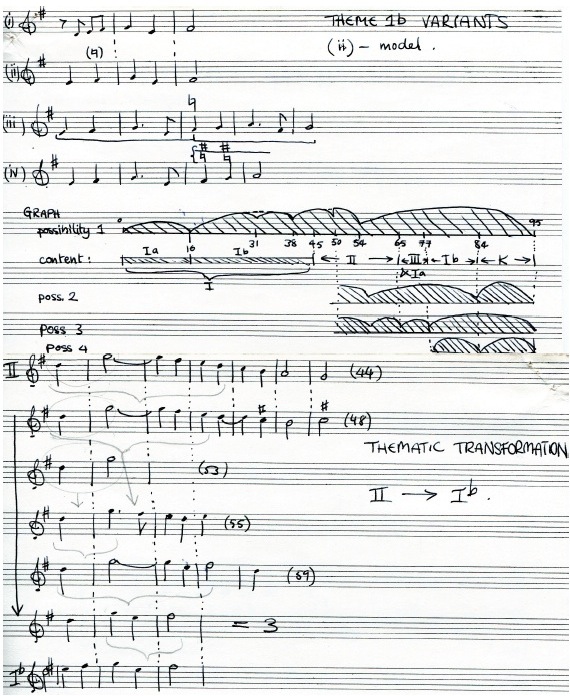| Source title | Fantasia del author. |
|---|---|
| Title in contents | Fantasia del author |
| Text incipit |

Music
Category abstract
Genre fantasia
Fantasia type ImP
Mode 7
Voices 3
Length (compases) 95
Vihuela
Tuning G
Courses 6
Final VI/0
Highest I/7
Lowest VI/0
Difficulty not specified
Tempo not specified
Song Text
Language
Vocal notation
Commentary
Polythematic fantasia of a type which presents several analytical problems. Structural division and thematic identification is ambiguous. The construction is highly original. Fuenllana gives a clue at the beginning. The way I have provisionally analysed its structure is as follows (see diagram):
I - 1-45
II - 45-65
III - 65-84
K - 84-95
I. Theme I is given in T and answered in S – but both themes are markedly different. Theme I is: Ia–Ib–Ia as given by T. S gives Ia. The rest of section bars 1-16 is built on Ia; then 17-14 on Ib >> I = 1-44.
II-III-K. Theme 2 is introduced at the high point of a curve! - brings down tension. 2nd entry is then relaxed. Theme is then on each subsequent statement modified until it has become Ib again by 77. 84 >> 95 in coda – free with only some suggestions of previous motives.
Definition of the section from 45-84 is ambiguous: The possibilities: (I) thematic transformation II >> Ib. (2) Theme 2: 45-65 & Theme 3: 66 -77 & Theme Ib >> 84. (3) same as (2) with extra sub-section at 54ff. A little set of imitations on the Ia tail of theme 1a is introduced 69-73. Themes 3 & Ib are very similar: the descending 3rd is central. The ascending 4th of theme 3 implies V-I, then followed by a descending 3rd. In Ib, stepwise motion before the descending 3rd implies IV-V-I. The opening ascending 4th provides the basic link between themes 2 & 3. When Ib reappears it does so in one of its permutations which makes it stronger & generally ascending.
The mode of the work is 7 and/or 8. S has range of mode 8, B has the range of mode 7. Cadences on I & V (vi) = 7. The work is not far from being monothematic in a flexible way. At any rate it shows Fuenllana being happy not to stick to formulaic solutions to form. This work presents many possibilities of interpretation. The intensity of the work is quite uniform. It is difficult to graph because of the various possibilities of part II. Thematic transformations (all transposed to one starting pitch) are sown together with graphic possibilities. Permutations of Ib are also shown. Coda is quite strong the tapers quickly.
The version on YouTube is played on a guitar-vihuela from the 1960s or 1970s and has a very dated sound.
